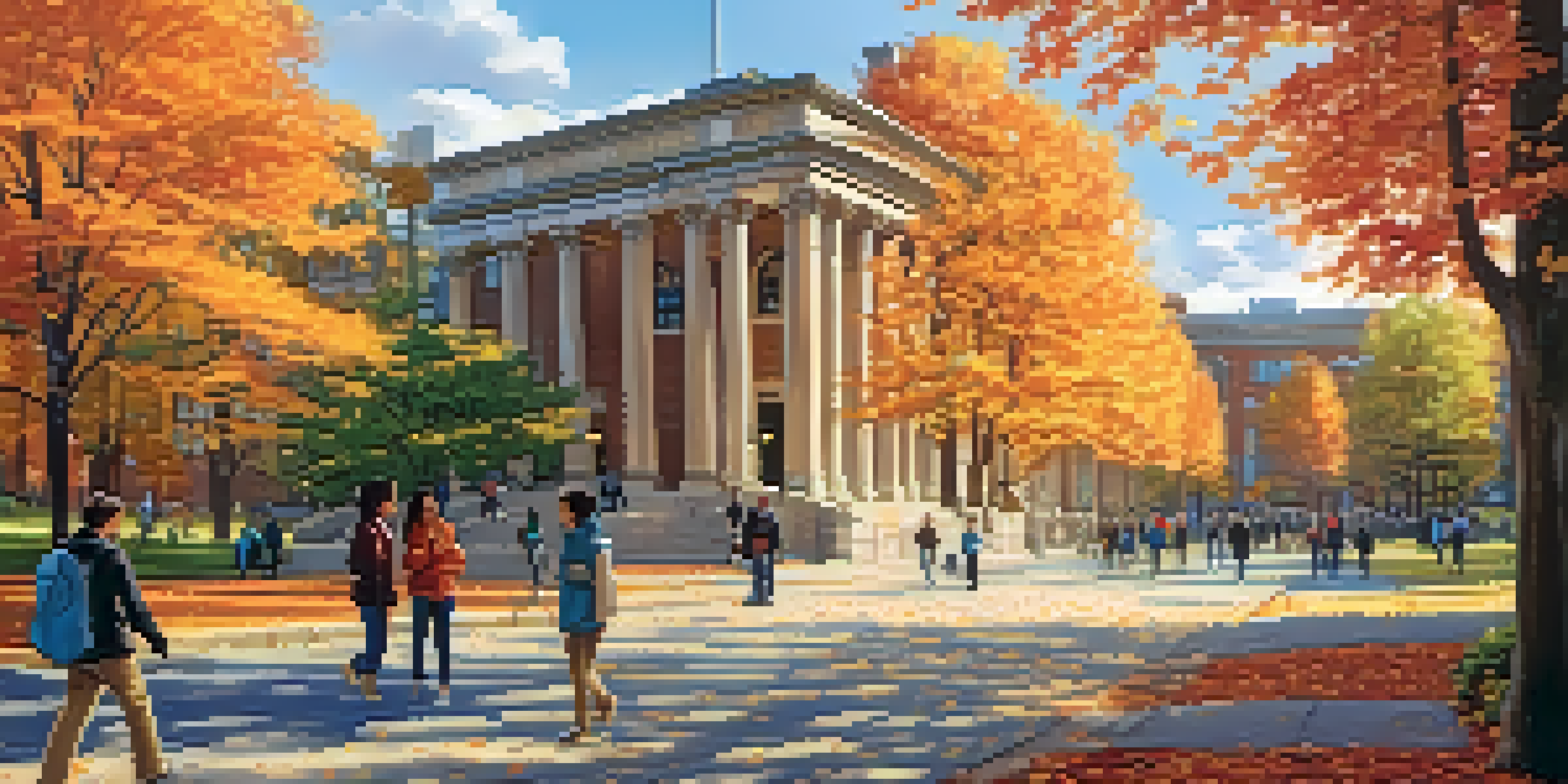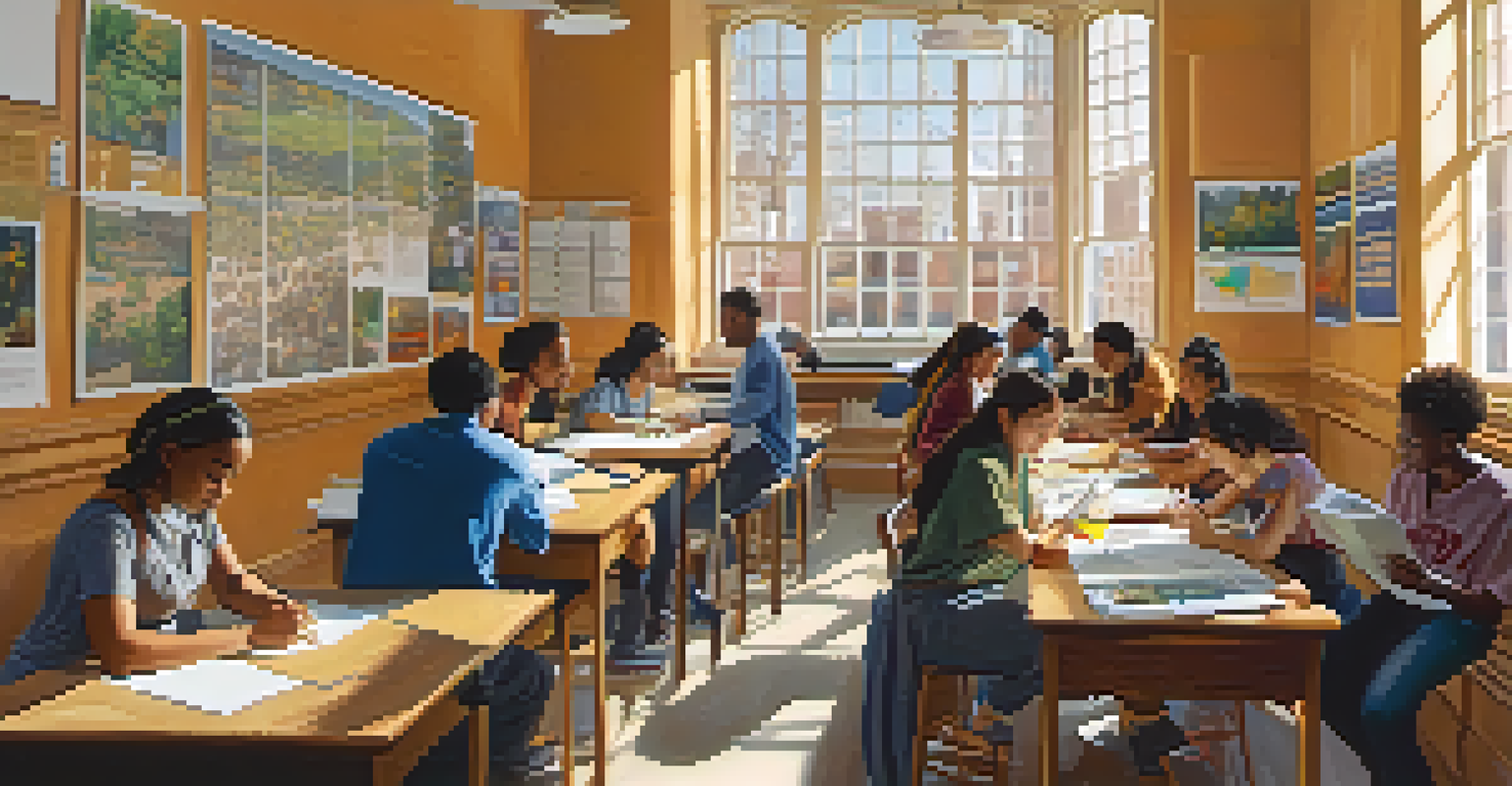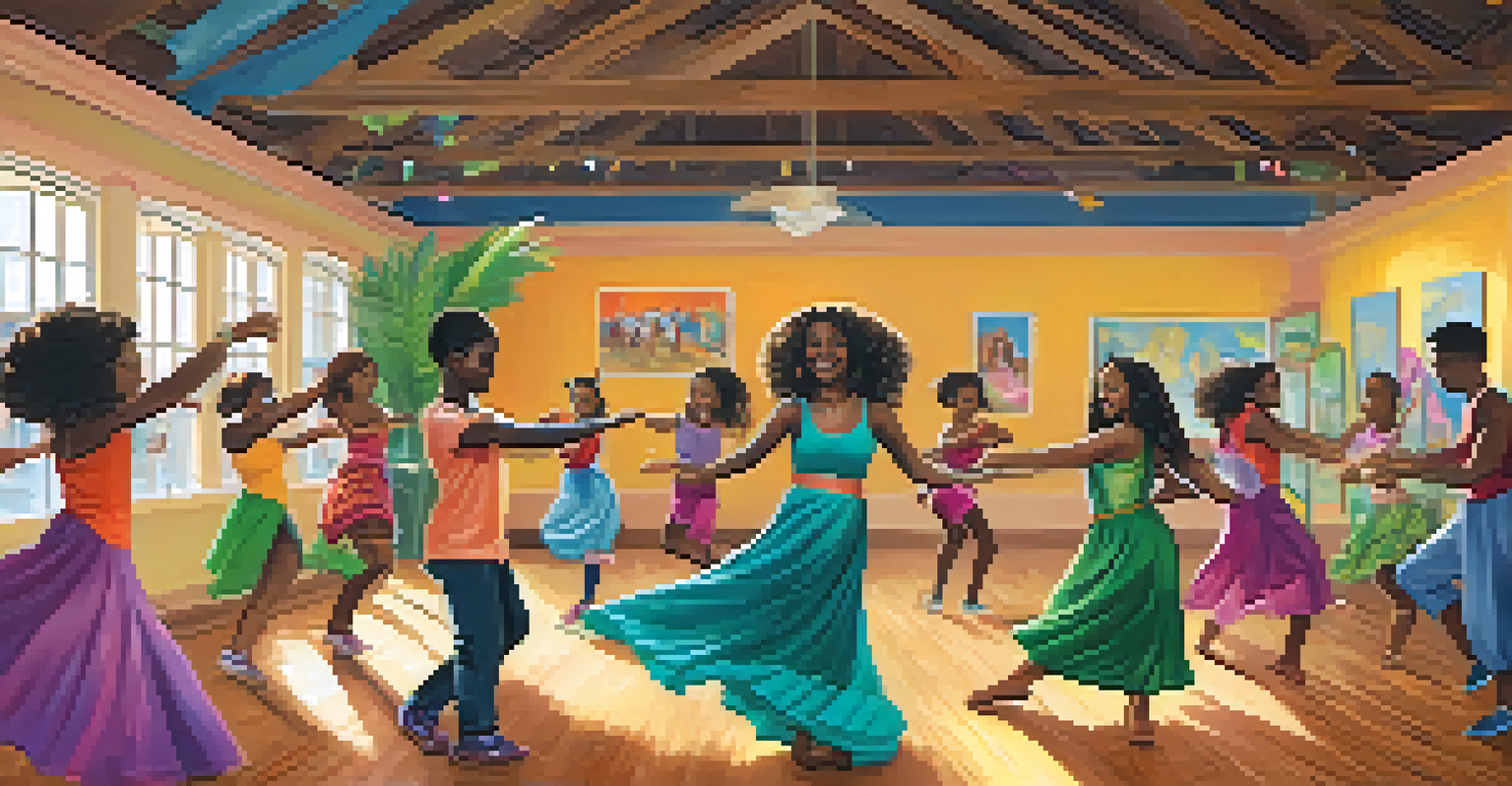The Role of Educational Institutions in NYC's Heritage

The Historical Significance of NYC's Educational Institutions
Educational institutions have played a pivotal role in New York City's history. From the founding of the first public school in 1755 to the establishment of prestigious universities, these institutions reflect the city's evolution. They not only educate but also serve as cultural hubs, embodying the diverse narratives that make up NYC's heritage.
Education is the most powerful weapon which you can use to change the world.
For instance, Columbia University, founded in 1754, has been a witness to historical events and social movements. It has produced numerous influential figures who have shaped the city and beyond. This rich legacy is a testament to how education intertwines with the city’s identity.
Moreover, schools like the City University of New York (CUNY) highlight the importance of access to education for all. CUNY's commitment to serving a diverse student body reflects the core values of inclusivity and opportunity, enriching the cultural fabric of the city.
Cultural Preservation Through Educational Programs
Educational institutions often serve as stewards of cultural preservation in NYC. Many schools and universities incorporate local history and heritage into their curricula, ensuring that students understand their city's past. This approach not only educates but also fosters a sense of belonging and responsibility towards preserving that heritage.

For example, programs that focus on New York's immigrant history encourage students to explore their own backgrounds and those of their communities. By doing so, they become active participants in preserving the rich tapestry that is NYC’s cultural landscape.
Education as a Cultural Hub
NYC's educational institutions serve as vital cultural centers that reflect the city's diverse history and values.
Additionally, partnerships between schools and local museums or historical sites provide students with hands-on learning experiences. These collaborations allow students to engage with their heritage on a deeper level, making history come alive in a way that textbooks often cannot.
Community Engagement and Social Responsibility
Educational institutions in NYC have long been catalysts for community engagement. Schools often organize events, workshops, and projects that encourage students to give back to their neighborhoods. This commitment to social responsibility not only benefits the community but also instills values of empathy and civic duty in students.
The function of education is to teach one to think intensively and to think critically. Intelligence plus character – that is the goal of true education.
For instance, many high schools in NYC partner with local organizations to address pressing issues such as homelessness and food insecurity. Through service-learning projects, students gain practical experience while contributing to solutions that impact their communities directly.
Moreover, this engagement fosters connections between diverse groups, promoting understanding and collaboration. As students work together on community initiatives, they learn to appreciate the rich diversity that characterizes New York City.
The Role of Arts Education in Cultural Identity
Arts education is a vital component of NYC's educational landscape, contributing significantly to cultural identity. Schools across the city offer programs in music, dance, theater, and visual arts, allowing students to express themselves creatively. These programs not only nurture talent but also highlight the importance of cultural heritage in artistic expression.
For example, students learning about Afro-Caribbean dance not only develop their skills but also connect with their heritage and community. Through such programs, they gain a deeper understanding of their cultural roots while fostering pride in their identities.
Community Engagement through Schools
Schools in NYC actively promote community engagement, fostering social responsibility and empathy among students.
Furthermore, arts education encourages collaboration among students from diverse backgrounds. This exchange of ideas and traditions enriches the overall learning experience and strengthens the sense of community within the school.
Influence of Educational Institutions on Local History
Educational institutions have significantly influenced local history in NYC, often serving as sites of important social change. Schools have been at the forefront of movements advocating for civil rights, gender equality, and educational reform. Their involvement has helped shape policies and attitudes that resonate beyond the classroom.
For instance, the historic protests at City College of New York in the 1960s were instrumental in pushing for greater access to higher education for underrepresented communities. Such activism highlights how educational institutions can be powerful platforms for change.
Additionally, the legacy of these movements continues to inspire new generations of students. By studying past struggles and achievements, students are empowered to advocate for their rights and those of their communities, ensuring that history remains a living, breathing part of NYC.
The Impact of Diversity in NYC's Educational Landscape
New York City's educational institutions are a microcosm of its diverse population. Schools reflect the myriad cultures, languages, and traditions that make up the city, providing a rich learning environment. This diversity is not just beneficial for students but also plays a crucial role in shaping NYC’s heritage.
For example, bilingual education programs in schools help preserve languages and traditions that might otherwise fade away. By valuing cultural diversity in the classroom, educators foster an inclusive atmosphere that celebrates differences and promotes understanding.
Diversity Enriches Learning
The diverse educational landscape in NYC prepares students for a globalized world by valuing cultural differences and collaboration.
Moreover, this diversity prepares students for a globalized world. As they learn alongside peers from various backgrounds, they develop critical skills such as empathy and collaboration, which are essential for navigating today’s interconnected society.
Future Directions for NYC's Educational Institutions
Looking ahead, the role of educational institutions in NYC's heritage will continue to evolve. As the city faces new challenges, schools must adapt to meet the needs of their communities while preserving cultural identity. This adaptability will be crucial for fostering resilience and unity in an ever-changing environment.
Innovative educational programs that integrate technology and community engagement will likely play a key role in this evolution. By embracing new methods of teaching and learning, schools can ensure that they remain relevant and impactful.

Ultimately, the future of NYC's educational landscape depends on the commitment of educators, students, and communities to uphold the values of inclusivity and cultural preservation. Together, they can ensure that the rich heritage of New York City continues to thrive for generations to come.